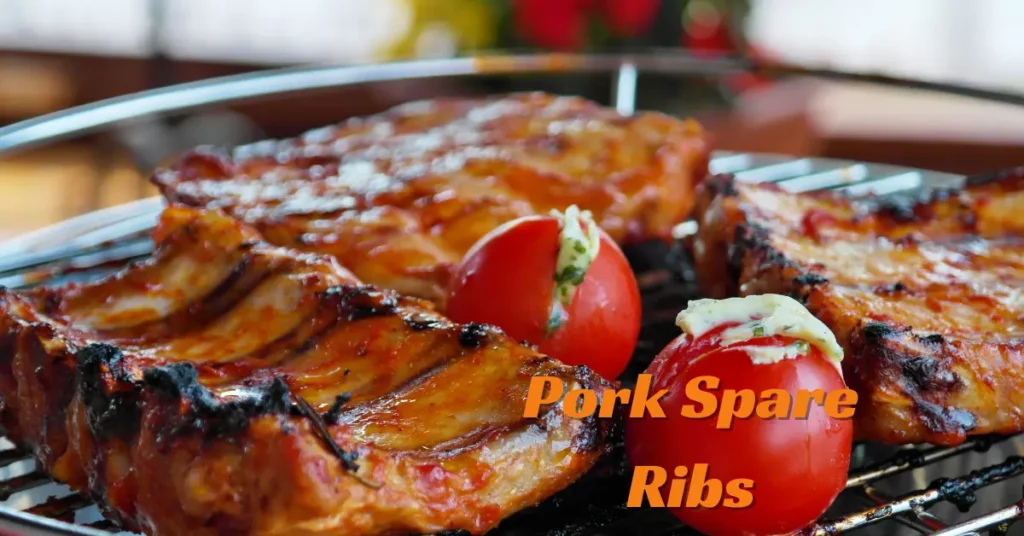This post may contain affiliate links. If you use these links to buy something we may earn a small commission. Thanks.
Smoking pork spare ribs on a pellet smoker is a great way to achieve tender, flavorful ribs with a perfect balance of smokiness and juiciness. Pellet smokers provide a consistent temperature, making them ideal for smoking meat without the need for constant adjustments. The key to mouthwatering spare ribs is patience, as the slow smoking process allows the flavors to develop while breaking down tough connective tissues. In this guide, we’ll cover the entire process, from preparation to serving, and discuss how long it takes to smoke pork spare ribs on a pellet smoker.
Choosing the Right Pork Spare Ribs
Before firing up the smoker, it’s essential to choose the right type of ribs. Pork ribs come in different cuts, including:
- Spare Ribs: Larger, meatier, and slightly tougher than baby back ribs, making them ideal for smoking.
- Baby Back Ribs: Smaller, leaner, and cook faster than spare ribs.
- St. Louis-Style Ribs: Trimmed spare ribs with the rib tips removed for a more uniform shape.
For this guide, we’ll focus on smoking spare ribs, which take longer to cook but deliver incredible flavor when done correctly.
Preparing the Spare Ribs
Proper preparation is crucial for achieving the best results when smoking ribs. Follow these steps:
Trimming the Ribs
- Remove the membrane (silver skin) from the back of the ribs by lifting one corner with a butter knife and pulling it off with a paper towel. This helps improve texture and allows seasonings to penetrate better.
- Trim any excess fat and loose meat to ensure even cooking.
Seasoning Options
You can season the ribs using a dry rub, a wet marinade, or a combination of both.
Dry Rub Recipe:
- 2 tbsp paprika
- 1 tbsp brown sugar
- 1 tbsp salt
- 1 tbsp black pepper
- 1 tsp garlic powder
- 1 tsp onion powder
- 1 tsp cayenne pepper (optional for heat)
Coat the ribs generously with the dry rub, ensuring even coverage. Let them sit for at least 30 minutes or overnight in the refrigerator for deeper flavor penetration.

Setting Up the Pellet Smoker
- Choose the right wood pellets: Apple, cherry, hickory, or maple are excellent choices for pork ribs.
- Preheat the smoker to 225°F (107°C) for optimal low and slow cooking.
- Ensure a steady smoke flow: Too much smoke can cause a bitter taste, so keep airflow steady.
The Smoking Process (3-2-1 Method & Other Techniques)
The 3-2-1 Method (6 Hours Total)
This is the most popular method for smoking spare ribs, breaking the process into three stages:
- Smoke for 3 hours (unwrapped)
- Place the ribs directly on the smoker grates.
- Spritz with apple cider vinegar or apple juice every hour to keep them moist.
- Wrap for 2 hours
- Wrap the ribs in aluminum foil with a mix of butter, honey, and brown sugar.
- Return them to the smoker to allow them to tenderize in their own juices.
- Unwrap & finish for 1 hour
- Remove the foil and place the ribs back on the grates.
- Apply BBQ sauce in the last 30 minutes for a caramelized glaze.
Alternative Methods
- 2-2-1 Method: Ideal for smaller racks, reducing the first smoking stage to 2 hours.
- No-Wrap Method: If you prefer a firmer bark and deeper smoke flavor, skip the foil wrapping and smoke uncovered for the full cook time.
Checking for Doneness
Rather than relying solely on time, use these methods to check if your ribs are done:
- Meat Thermometer: The internal temperature should be 195-203°F for optimal tenderness.
- Bend Test: Lift the ribs with tongs; if they bend easily and slightly crack, they’re done.
- Toothpick Test: Insert a toothpick between the bones—it should slide in with little resistance.
Resting & Serving
- Let the ribs rest for 10-15 minutes before slicing to allow juices to redistribute.
- Slice between the bones with a sharp knife.
- Serve with classic sides like coleslaw, baked beans, mac and cheese, cornbread, or potato salad.
Conclusion
Smoking pork spare ribs on a pellet smoker is a slow but rewarding process. The 3-2-1 method ensures tender and flavorful ribs, but you can experiment with different techniques to find your preferred texture and taste. With proper preparation, patience, and the right wood pellets, you’ll be able to serve up a mouthwatering rack of ribs every time. Enjoy your BBQ adventure.
